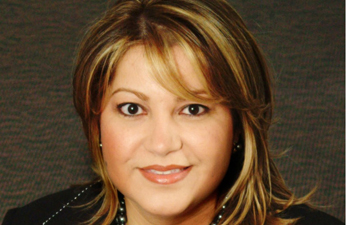Business content on MediaShift is sponsored by the weekend MA in Public Communication at American University. Designed for working professionals, the program is suited to career changers and public relations or social marketing professionals seeking career advancement. Learn more here.
Fifty million people. One trillion dollars in buying power. Ad spending up 164% since 2001 to $3.88 billion. Hundreds of Spanish-language TV stations across the U.S.
Those eye-catching numbers represent the immense, and largely untapped, scale and wealth of the Hispanic-American media market. Put into greater perspective, if Hispanic-Americans comprised their own country, it would be the fifth-largest, by population, in the European Union. And this demographic is growing — rapidly.
Despite these figures, one component is still missing in the media industry’s quest for greater diversity: Hispanic leadership in the executive suite at media companies.
As a Hispanic-American executive, who also happens to be female, I have seen first-hand the immense growth and impact diversity is having on the American economy and culture. Media executives, marketers, communicators, lawmakers and all of America are hurtling into an era where the business and marketing of diversity — particularly the Hispanic-American market — will be at the forefront of the American conscience.
Where Are The Hispanic Execs?
And yet a wide divide still exists between this reality and the promise for greater diversity in the ranks of media, PR, and ad agencies’ senior management.
“The future of our nation depends on what happens in [the Hispanic-American] population, a segment of Americans that have not always gotten the opportunities,” they deserve, said Manny Ruiz, founder of Hispanic PR Wire and Hispanicize.com, in a recent PRNewser interview.
This lack of opportunity has led to Hispanic-Americans being underrepresented in corporate boardrooms. According to the 2009 Hispanic Association for Corporate Responsibility Corporate Inclusion Index survey, only 4.8 percent of all Fortune 100 executive- and director-level positions are held by Hispanics. Similarly, Hispanics account for only 6 percent of representatives on Fortune 100 boards.

It took my own professional organization, the Public Relations Society of America, 48 years before Luis Morales became its first Hispanic president in 1996. Fifteen years later, I’m the first Latina to serve as chair and CEO.
My question is: Why was there a gap in years for the PRSA to select another Hispanic leader? I also wonder, why aren’t there more Hispanic-Americans, whom I know are succeeding in the business world, stepping forward to executive and board positions across the media and PR industries?
More Questions Than Answers
Is it an issue of being the “token”? Nearly 20 years ago, I remember looking around the boardroom and finding that, not only was I the only woman in the room, I also looked different from everyone else. Feeling like “the only one” didn’t stop me from finding common ground with my colleagues, and it shouldn’t be an impediment for greater diversity within media’s C-suite.
Is it an issue of language? Many times, people assume that all Hispanic-Americans speak Spanish and prefer Spanish. That is as much a myth as is Spanish fluency for those who do speak Spanish. There are Hispanics, like me, who are just as comfortable communicating in Spanish or English because of our bi-lingual fluency. But, there are just as many who are only truly comfortable in one language — English.
Is it cultural? Business development and growth is part of the Hispanic-American spirit. Our culture thrives on entrepreneurship. Hispanics aren’t fond of sticking to the “way things have always been.” We’re living proof that change is the only constant; thus we prefer acculturation instead of assimilation.
Slow Progress
I’ll admit, the level of diversity within public relations has progressed significantly in recent years. For example, 14 percent of PRSA members are self-described “diverse;” that’s an increase from 7 percent in 2005.
But we still have quite a ways to go in order to meet the global business community’s diverse communications and marketing challenges.
Playing a leading role in conversation development across societal, economic and ethnic variances has always been one of PR’s strongest areas of focus. A key factor in continuing a surge in value will be the industry’s ability to generate two-way, conversation-themed strategies. And this can only come from the inclusion of non-traditional hires, such as bloggers, social-media influencers and analysts that come from a variety of ethnic and racial backgrounds.
Diversity is Worth Trillions
It’s quite simple, really: Diversity within PR will be crucial to agencies’ success in years to come, as businesses continue seeking a more global perspective to their communications.
That means it is the responsibility of the PR industry — along with the media companies that use our services — to place an immediate focus on the business value of diversity and a diverse boardroom. Businesses must be prepared to tap into burgeoning and increasingly diverse markets for new revenue and growth. And having a more diverse executive suite, which reflects the modern ethnic makeup of the U.S., will better prepare the media industry to reap the immense financial rewards of a modern and very diverse America.
In today’s stagnant economy, can any media company — and the PR and marketing firms working within that sector — afford to go without the diverse leadership that could help it tap into a $1 trillion market? Not likely.
(A tip of the hat to Julian McBride, whose excellent MediaShift post on fixing the tech PR industry’s diversity issues inspired this post.)
Rosanna M. Fiske, APR, is chair and chief executive officer of the PRSA. She is also director of the Global Strategic Communications master’s program in the School of Journalism and Mass Communication at Florida International University in Miami. With more than 20 years of experience, Fiske began her career as a journalist, and then moved to marketing and corporate communications. She has held senior communications counsel, marketing and management positions in agency and corporate settings.
Business content on MediaShift is sponsored by the weekend MA in Public Communication at American University. Designed for working professionals, the program is suited to career changers and public relations or social marketing professionals seeking career advancement. Learn more here.

